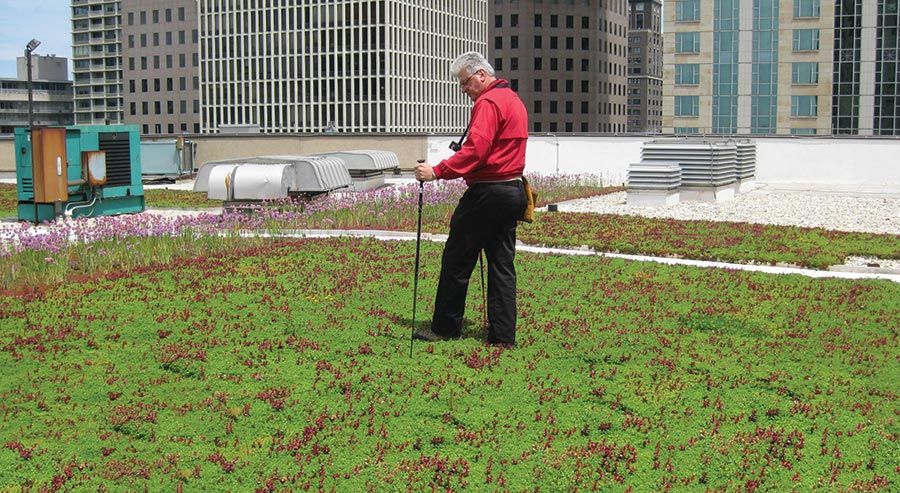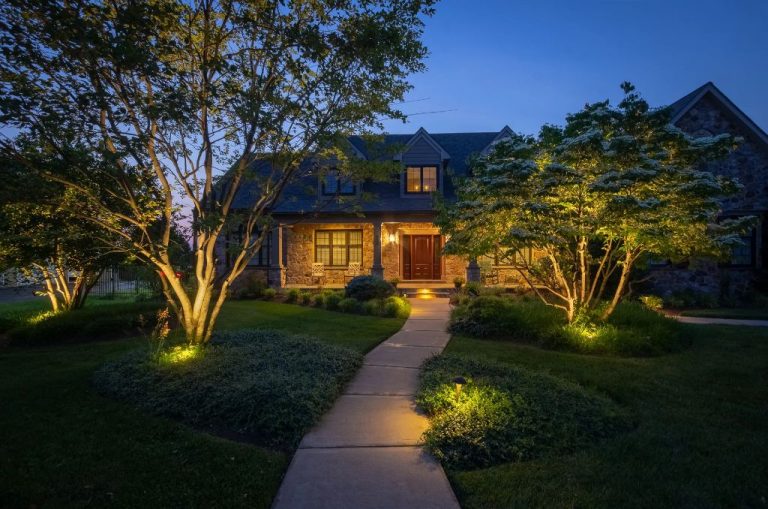Rooftop Garden Inspiration: Landscaping Ideas For Urban Roofs
Rooftop gardens are gaining in popularity in urban areas across the globe. Research shows rooftop farming is on the rise and is attributed to the multiple benefits it provides. Urban rooftop gardens allow city dwellers to tap into the many advantages of gardening and connecting with nature without needing access to ground space. Rooftop gardens offer environmental benefits like cooling, stormwater management, and biodiversity support. They can also provide fresh produce and herbs for residents. Additionally, rooftop gardening creates attractive green spaces that improve views and mental health. With increased focus on environmental sustainability and urban resiliency, rooftop gardens are an important trend for creating livable cities.
Space Considerations
When planning a rooftop garden, it’s important to consider the size and layout of the available roof space. According to The Complete Guide to Building a Rooftop Garden, the ideal size for a rooftop garden can vary greatly depending on your goals and available space. Measure the total roof area and plan the garden dimensions accordingly. For example, a small garden could be 8 feet wide by 12 feet long. Larger roof spaces allow more flexibility for creating interesting designs and incorporating features like pathways, seating areas, and vegetable beds.
The layout should maximize sunlight exposure, account for roof access points, provide proper drainage, and allow convenient movement through the space. Arrange taller plantings so they don’t shade shorter plants. Leave enough space between planted areas for easy access and maintenance. Locate seating areas near entrances or where views are best. A thoughtful layout creates an inviting, functional garden.
Structural Requirements
Installing a rooftop garden requires careful consideration of the structural requirements to support the additional weight. According to the Roof Garden Specification and Details guide, a lightweight growth medium of 30% organic soil and expanded clay pellets is typically used, with a depth of 3-4 inches (https://www.buildsite.com/pdf/versico/Versico-Roofing-Systems-Roof-Garden-Specification-and-Details-Guide-Specifications-658942.pdf). Proper waterproofing and drainage are critical – the roof deck must be watertight to avoid leaks, and drainage mats can help excess water flow away from the roof structure.
The weight of a rooftop garden is estimated at 15-30 pounds per square foot when fully saturated. Concrete roof decks are commonly required to handle this loading. Consult with an architect or engineer to evaluate the existing roof structure and determine what upgrades may be needed. Some key factors are the age of the building, type of roof framing, and how the weight from the rooftop garden will be distributed. Waterproofing the deck before installing the garden is also essential.

Proper drainage, such as including drainage mats under the growth medium, is important to avoid standing water and excess weight on the roof. The Roof Garden Specification and Details guide recommends sloping the drainage mat at 1/4 inch per foot towards roof drains or scuppers (https://www.buildsite.com/pdf/versico/Versico-Roofing-Systems-Roof-Garden-Specification-and-Details-Guide-Specifications-658942.pdf).
Plant Selection
When choosing plants for a rooftop garden, it’s important to select varieties that can withstand the harsh conditions found on rooftops, such as intense sun, heat, drought, and wind. Succulents like sedums, aloes, and agaves are great choices as they store water in their leaves and thrive in full sun exposure.
Native grasses and perennials are also good options, as they have adapted to your local climate. Some drought tolerant varieties include purple coneflowers, black-eyed susans, lavender, and ornamental grasses.
For colored foliage, try heucheras, coleus, or flowering kale and cabbage. Herbs like thyme, oregano, rosemary, and sage grow well in containers and can handle the drought.
When planting in windy areas, avoid tall or top-heavy plants that may get damaged. Stick with low-growing, sturdy varieties. Vines and trailing plants can be used to blanket the edges of containers and rooftop planters.
Be sure to position plants based on sun exposure. Full sun areas are best for drought tolerant varieties like sedums, while part shade areas can support impatiens, begonias, and ferns. Check plant tags for specific light requirements.
For inspiration, see this list of top plants and trees for rooftop gardens.
Soil and Irrigation
Rooftop gardens require lightweight soil mixes that don’t overload the roof structure. Special mixes containing expanded clay, shale, or slate are ideal for rooftop growing conditions (Hunter Industries, 2022). These lightweight soils drain well while retaining moisture and nutrients for plants.
Efficient irrigation is critical for rooftop gardens to conserve water and prevent overloading the roof with excessive weight. Drip irrigation systems provide the best control and use water most efficiently. Driplines release small amounts of water slowly over time right at plant root zones (Geopard Technologies, 2022). Sprinkler systems are another option, but require more water to prevent runoff. Programmable irrigation controllers help automate watering schedules.
Containers vs In-Ground
When designing a rooftop garden, a key decision is whether to use containers for planting or create in-ground beds directly on the roof surface. Both methods have pros and cons to consider:
Containers:
- More lightweight and portable if needing to move or reconfigure the garden layout.
- Allow for better drainage and soil quality control.
- Enable height and visual interest by elevating plants.
- Offer flexibility if renting the roof space.
- Can be more costly than in-ground planting.
- Require more frequent watering as containers tend to dry out faster.
In-ground beds:
- Less costly to install than containers.
- Require less frequent watering once established.
- Allow plants’ roots to spread naturally.
- Provide a more permanent garden, not easily changed.
- Need proper waterproofing and drainage under the soil.
- Heavy saturated soil can add major weight load to the roof.
When evaluating containers versus in-ground planting, consider factors like budget, roof structure, desired flexibility, and types of plants. Combining both methods is also an option. As noted in this rooftop garden guide, extra thought toward containers, soil, and drainage is key for success.
Access and Safety
Rooftop gardens bring beauty and nature to urban areas, but they also require careful planning for access and safety. Proper stairs, railings, and fall protection are crucial.
Stairs should have a sturdy foundation and meet building code requirements for riser height and tread depth. Railings around rooftop gardens should be 42 inches high according to most building codes [1]. Clear signage near stairs and access points reminds people to use caution.
It’s also wise to install perimeter fall protection. Common options are parapet walls at least 42 inches high or wire cable railings [2]. For rooftops open to the public, advanced fall arrest systems may be required.
With thoughtful access design, rooftop gardens can be safely enjoyed by all.
Wind and Weather Considerations
Wind and extreme weather events can damage plants and infrastructure in a rooftop garden. Installing proper wind breaks and shelters is crucial for protection. According to Rooftop Vegetables and Protection from High Winds, using burlap strips as wind breaks can help block strong winds. Rooftop Garden Windbreak recommends trellises or lattice as effective permeable windbreaks. Providing shade elements like awnings, pergolas, and shade cloth will also protect plants from harsh sun and wind exposure.
In areas with extreme weather like heavy snow or storms, the garden design should account for potential damage. Using hardy plants adapted to the climate will improve resiliency. Proper drainage and irrigation that can withstand flooding is also important. Anchoring any loose elements and planning emergency maintenance after extreme weather will help minimize disruption.
Maintenance
A rooftop garden requires regular maintenance to keep plants healthy and prevent issues like drainage blockages or damage. According to Networx, some key maintenance tasks include:
- Inspecting the garden regularly for signs of problems like pests or decaying vegetation.
- Pruning and trimming plants as needed.
- Removing dead leaves and debris to prevent clogs.
- Replenishing soil nutrients and re-mulching annually.
- Checking and repairing any leaks or damage.
- Cleaning drainage paths and gutters.
Ongoing costs mainly include soil, mulch, fertilizer and new plants each year. Labor costs can add up for weeding, pruning and inspections if you hire help. But overall, a well-designed rooftop garden does not require intensive maintenance. Make a plan for regular care and budget accordingly when creating your urban oasis.
Inspiring Rooftop Garden Examples
Rooftop gardens allow city dwellers to bring a touch of nature and greenery to urban environments. With thoughtful design, rooftop spaces can be transformed into beautiful sanctuaries and relaxing escapes. Here are some inspiring rooftop garden designs to showcase innovative and beautiful ways to landscape rooftop spaces:
This modern rooftop garden in London features clean lines, minimalist plantings, and a serene water feature (Source). The simplicity creates a soothing oasis above the bustling city.
Use height and vertical gardens to maximize space in small rooftop gardens like this one in Hong Kong. Mixing heights, textures, and colors creates visual interest (Source).
For a rooftop garden with a tropical vibe, use hanging plants, bright colors, and wicker furniture. This garden in Singapore feels like a beachside resort (Source).
Intimate seating creates cozy spaces for relaxing in this New York rooftop garden. Thoughtful lighting allows for nighttime use too (Source).
Sculptural elements like pergolas, trellises, and archways add visual interest to rooftop gardens, as seen in this Chicago space (Source).
Make a small rooftop garden feel bigger by using mirrors strategically to reflect views and repeat plantings, like in this Parisian garden (Source).
Get creative with upcycled containers and repurposed materials to build planters inexpensively. This urban garden in London takes inspiration from the city setting (Source).
Greenery softens hard materials and adds life to modern spaces, as seen in this sleek Barcelona garden (Source). Simple plant choices keep the look minimal.
Dynamic angles, curves, and elevation changes create an exciting landscape. This award-winning New York garden feels like art in motion (Source).
Rooftop meadows provide low-maintenance greenery and help support biodiversity. This meadow garden in London invites birds and butterflies (Source).






